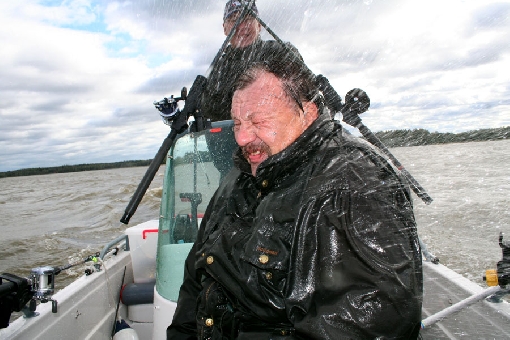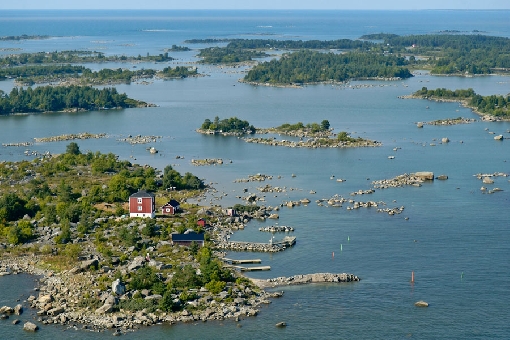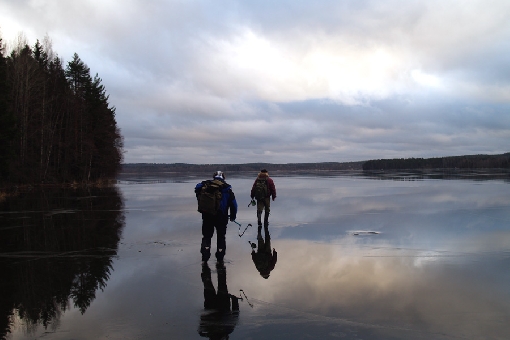Safety Finland's waters are extensive with varying weather conditions. On the coast and wide open lakes, waves may be quite high. When you're heading out to the waters, you should follow developments in the weather conditions and check the latest forecast before setting out. Photo: Jari Tuiskunen  On major lakes, be prepared for sweeping winds. Boating equipment should always be safe. It's not a good idea to venture out on windy waters in too small a boat. The basic safety equipment when heading out to the waters includes life jackets, a bailer, oars, a chart and a mobile phone. If you are using a rental boat, keep the telephone number of the owner with you. Inform those staying ashore where you are going and when you are coming back. In the event of an emergency, dial the universal emergency number 112. Photo: Lentokuva Vallas  Boating is a challenge in many places in the Merikarvia Archipelago and on other coastal waters. Bring a depth chart with you Many water areas have shoals. Particularly rocky areas include the stretch of the Gulf of Bothnia between Rauma and Kokkola and the area of the Gulf of Finland located east of Loviisa. There are also plenty of shoals in lakes. You will definitely need a depth or bathymetric chart when moving around on Finnish waters. Without a proper chart, you may also get lost in the extensive and labyrinthine water areas. Depth data is available on major water bodies and it is marked on nautical charts, boating charts and basic maps. Depth charts are available from petrol stations, book stores and the National Land Survey of Finland. You can also find depth charts on the maps of water areas available on this site (Lakes; e.g. Lake Höytiäinen, depth chart; zoom in to view depths). An echo sounder is a handy tool for locating shallows. Alcohol and carelessness aboard a boat result in many cases of drowning every year. The risk is highest when waters are cold in spring and autumn, as hypothermia takes hold fast if you fall into the water. An immersion suit is a good precaution for use in cold and windy conditions. If the weather is bad, you would do well to stay ashore. Photo: Jari Tuiskunen  You should only go ice-fishing when the ice is strong enough. Don't go walking on thin ice When you move about on ice-covered waters in winter, you should verify the strength of the ice. In current spots, the cover is weak even at freezing temperatures, so you ought to watch out for those. Whenever you are moving about on ice, always carry ice picks so as to drag yourself out of holes, should you fall through the ice in spite of all precautions. It's worth asking local inhabitants about the strength of the ice and possible current spots. Freezing temperatures in winter and the combination of frost and wind in particular, place strict demands on your equipment. Winter anglers ought to prepare for near-arctic conditions in Finland – especially in Lapland – as the temperatures during frost spells may sink as low as minus 30 to 40 degrees Celsius. On a windy day, a temperature below minus 15 degrees is a good reason to put off your ice-fishing trip. |